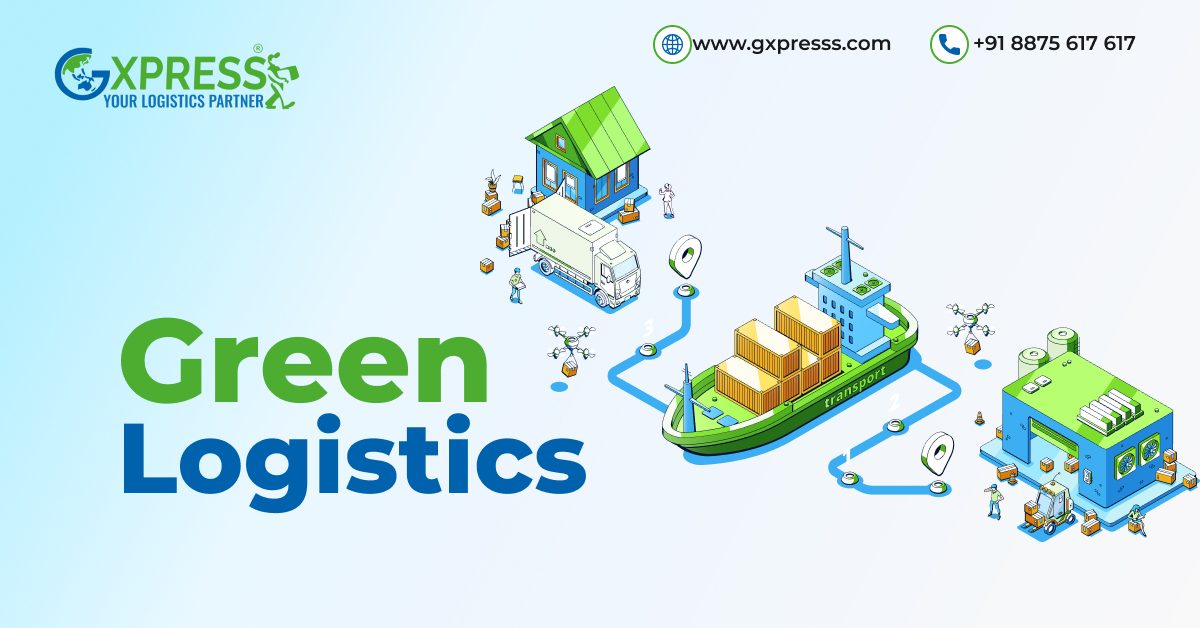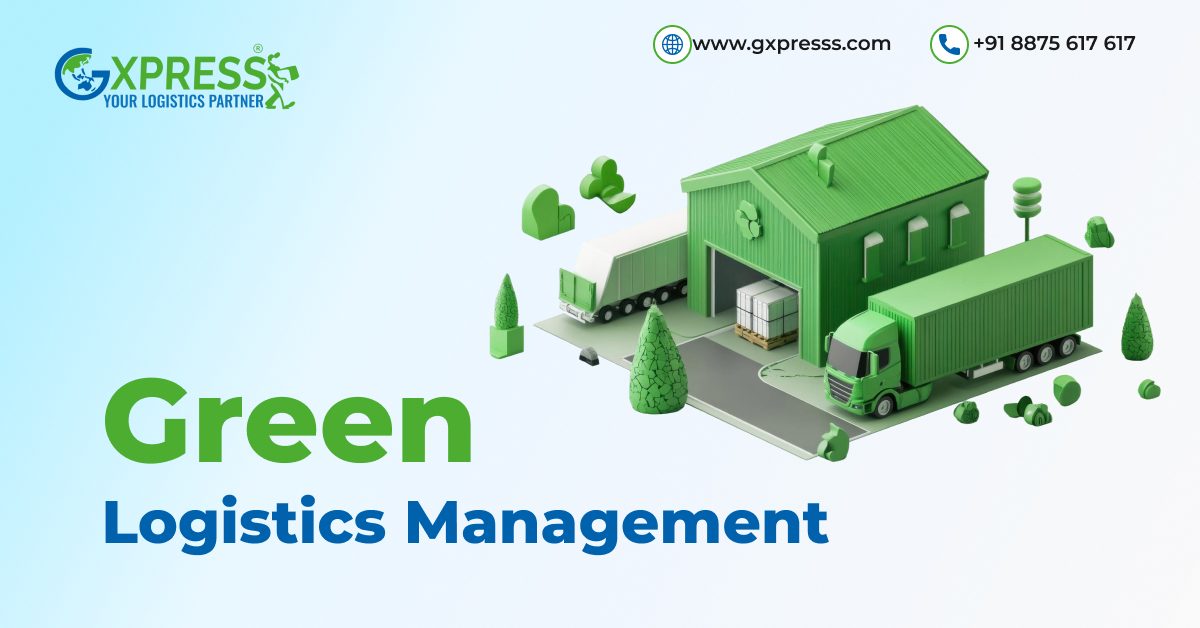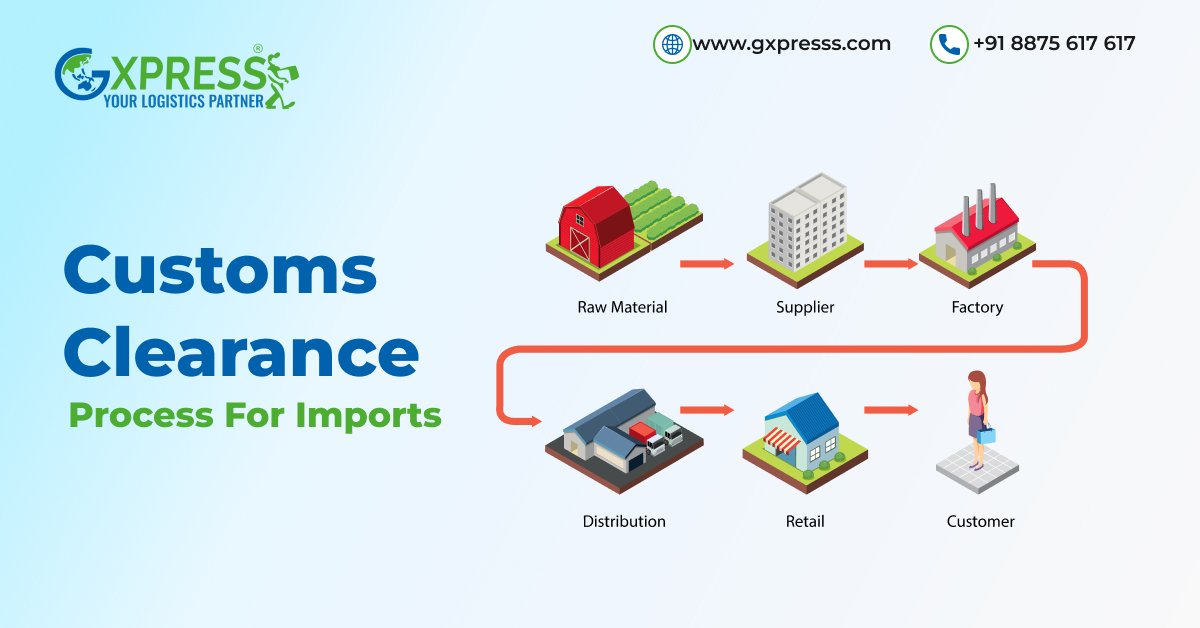September 19, 2025Freight8 min readBy Admin
What is Green Logistics & how to reduce Carbon Footprint in Freight Forwarding

Green logistics is gaining value with time. Suppose a large container ship is going through the sea in a very calm and quiet manner, but on the inside, it is loaded to the top with thousands of containers. From technology to apparel, raw materials to consumer goods, in brief. Do not forget that behind the ship is a huge system of trucks, warehouses, ports, and flights. All coordinating to transport the same goods to different locations all over the world.
Now, try to visualize the secret path that is left by this system: carbon emissions. Freight forwarding, as a vehicle for international trade, is still a major contributor to the environment. However, the logistics industry can be part of the solution, rather than the problem, if it adopts the right strategies. Green logistics have come to the rescue, a transition in the way the companies consider transport, warehousing, and supply chain operations.
This post is about the definition of green logistics transportation, its importance, and the ways freight forwarders can reduce carbon emissions without impeding the smooth flow of global trade.

What is Green Logistics?
Green logistics, at its essence, is the work of turning supply chains into more environmentally friendly ones. It means the same as keeping the goods flow uninterrupted, but with less impact on the environment. Green logistics adds another layer: sustainability. This means factoring in:- Lower carbon emissions in transport
- Energy-efficient warehouses
- Smarter packaging to reduce waste
- Cleaner fuels and technologies
Green Logistics Examples: What Kind Of Changes Can You Expect
If you take a look around, you’ll see that green logistics is happening all around us. Here are some key practices:1. Eco-Friendly Transportation
- Electric & hybrid trucks: EVs are slowly taking over logistics because of less dependence on fossil fuels.
- Alternative fuels: Biofuels, LNG (liquefied natural gas), and hydrogen are actually preferred over diesel lately.
- Optimized routes: Modern software automates the freight routing procedures and helps the freight forwarders avoid unnecessary mileage, which leads to savings of fuel and emissions.
2. Smart Warehousing
- Solar-powered warehouses are becoming the common warehouses.
- Energy-efficient lighting and cooling systems are primarily responsible for the overall energy consumption that has been brought down drastically reduced.
- Fully automated storage systems are designed to occupy the least amount of space that is not productive, and at the same time, use part of the energy to keep the stored items fresh.
3. Packaging Innovations
- They are changing plastic to biodegradable or recyclable materials.
- Right-sizing packaging is a new and innovative method that aims to eliminate the empty space in the packaging of shipments.
- Reusable packaging models, e.g., crates, are an alternative to single-use cartons.
4. Carbon Offsetting Programs
Some freight forwarders have now started to provide their customers with an option to counterbalance or offset emissions from their freight shipments. This may include reforestation, renewable energy projects, or carbon credit programs for purchase.5. Digitalization & Data
AI-powered demand forecasting, affiliated paperless bills of lading, and IoT-enabled shipment tracking all contribute to the simplification of operations that enhance energy efficiency throughout the entire chain.Why Green Logistics is Important?
Green logistics isn’t just a “feel-good” move. It’s becoming a business necessity. Here’s why:1. Environmental Responsibility
The transportation sector is the largest source of the world’s total carbon dioxide emissions. It is crucial to significantly reduce its impact if the battle against global warming is to remain successful.2. Regulatory Pressure
Emission standards are being raised by governments all over the world. In addition to the EU carbon border adjustment mechanism, India’s initiative towards cleaner fuels is another example of what is going on in the regulatory landscape. So, unless businesses evolve, they run the risk of becoming outdated.3. Consumer Demand
Today`s consumers want to trace the origin of the products they purchase and understand how they are delivered. Businesses with cleaner supply chains are more likely to win the trust and loyalty of the customers.4. Long-Term Cost Savings
Green logistics will be more expensive at the beginning, but the savings will be significant in the future when there will be fuel efficiency, better routes, and less packaging will be used.5. Corporate Reputation
The quality of a company’s products is not the only thing the public pays attention to. Moreover, the environmental impact is also a factor. Green supply chains not only support brand value but can also position your company as a partner of other businesses that share similar values.
Benefits of Green Logistics
Businesses profit more from going green: Less carbon footprint, improving their brand name. In fact, this is the main reason why enterprises usually have CSR (Corporate Social Responsibility) programs. Consequently, this is also good for the companies as they can attract a closer relationship with their followers or clients and also help the environment from being destroyed. It is usually a great simplification of the entire shipping process when sustainability measures, for instance, reducing the distances, combining the shipments, and digitizing the processes, are adopted.The Future of Green Logistics
Green logistics management isn’t a passing trend. It’s the new backbone of freight forwarding, a blend of technology, sustainability, and responsibility:Electrification of Fleets
Electrification will be the main trend for the next 10 years in the whole range of vehicles, from delivery vans to heavy-duty trucks. One of the major factors that makes EV adoption more reasonable is the charging infrastructure, which is growing.Circular Supply Chains
Future supply chains won’t just deliver goods but also bring back used products for recycling or repurposing.Data Transparency & Carbon Tracking
Green logistics tracking will help with carbon footprint. Shippers will increasingly demand carbon footprint reports for every shipment. Blockchain and IoT can make this possible in real time.Conclusion
Despite the fact that global trade remains unchanged, the urgency to fight climate change hasn’t diminished. The logistics sector, which is usually referred to as a silent polluter, is now taking the lead and going for lighter emissions. Green logistics is no longer just a check on the environmental list. The thing is better business, viable supply chains, and a planet that is less polluted. The implementation of small steps is the move from eco-friendly trucks to warehouses powered by renewable energy, and the use of intelligent packaging is getting closer to a kind of change that is necessary. In this regard, freight forwarders have to face the decision: modify and come up with new solutions or be out of the game. The businesses and consumers have an even simpler choice. They can support the companies that are the leaders of sustainable change. It is not easy to implement these changes, but it is important. We, at Gxpress, also continuously take initiatives to help the earth. We have planted more than 10,000 trees so far, and spent ₹50M+ towards CSR initiatives.Frequently Asked Questions (FAQs)
Q1. What is meant by green logistics?
Green logistics is the use of sustainable practices in the process of transporting goods from one place to another.Q2. What are some green logistics companies in India?
There are many companies in India putting green logistics practices into their day-to-day activities. One such company is Gxpress.Q3. What is the concept of green management?
Green management is an approach, or rather an initiative from businesses to prioritize environmental responsibility in their activities. That means implementing sustainable practices to reduce the impact on nature.Q4. What are the benefits of green logistics?
The benefits of green logistics are: reduced carbon emissions, lower costs in the long run, improved operational efficiency, enhanced reputation as well as customer loyalty, and environmental compliance.Q5. What are the objectives of green logistics?
The fundamental targets are to cut emissions, decrease waste, save energy, adopt the use of clean technologies, and employ a supply chain that is economically and environmentally balanced.Q6. What is the importance of green logistics?
Green logistics plays such an important role, as it is one of the major weapons against climate change. Besides the fact that it meets rising regulatory and consumer expectations, it reduces operating costs in the long term and assures businesses stay competitive in a sustainability-driven global economy.Share this article:



